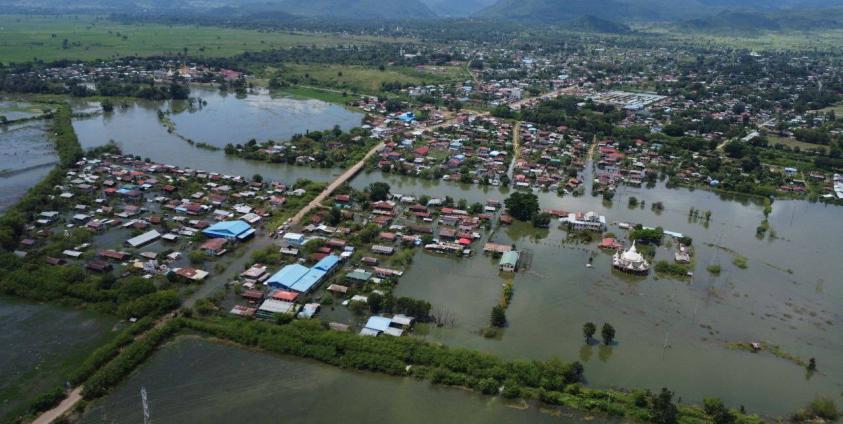Since the second week of September, displaced persons who have been exposed to floodwaters for an extended period have reported an increase in cases of illness and fungal skin infections, according to report from infected displaced persons.
Residents, including displaced persons from five flood-affected villages on the border of Loikaw and Dee Maw Hso Townships, are in urgent need of medical treatment for skin infections, as reported by a woman providing healthcare in the area.
“After floods, there is always a risk of exposure to contaminated water,” said the health worker. “Especially with unclean water, it can lead to fevers and rashes in both children and adults. While we’ve received food aid, there hasn’t been any medical assistance yet. I can offer consultations, but unfortunately, I don’t have the necessary medicines or funds to provide treatment.”
The five affected villages—Paya Ni, Paya Phyu, Kayah Nye Ku, Daw Paw Kleh, and Saw Khee Daw—were inundated by flooding. The flooding occurred in the second week of September, forcing residents to relocate to safer areas and nearby villages.
The health worker reported that the symptoms of fever and rashes have persisted for over two weeks. Displaced persons are appealing for increased access to healthcare, including funding for essential medical supplies. Additionally, the woman providing healthcare noted that they also need assistance to cover medical expenses.
There are over 1,000 flood-affected residents, including displaced persons from these five villages, with a significant number reportedly suffering from fever and skin infections. Further reports indicate a higher number of cases in nearby villages like Noe-koe, Saw Khee Daw, and the Zaik Kwin village area, with 565 individuals affected.







